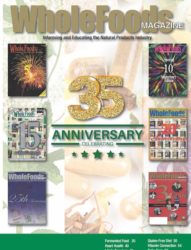Sugar Land, Fort Worth, TX—The economic downturn may have meant a major slowdown for new construction projects, but the green building sector of the construction industry hasn’t felt as much pain during this time, and its prospects for the future are even brighter. It will be the way of the future, as the public demand for environmentally conscious construction meets politically backed incentives. Two Texas-based organizations, Himalaya Herbal Healthcare USA and the Botanical Research Institute of Texas (BRIT), are getting in on the trend of environmentally friendly building, with expansive new facilities that are set to meet a high standard for green building, namely the Leadership in Energy and Environmental Design (LEED) certification.
LEED is a rating system for green construction projects introduced by the U.S. Green Building Council (USGBC). It rates environmentally sustainable construction on a points scale, based on various standards of energy efficiency and environmental impact. Levels of LEED certification are based on a project’s fulfillment of these criteria, such as proper ventilation and efficient use of heat energy. Himalaya Herbal Healthcare will soon build an eco-conscious U.S. headquarters on seven acres of land in suburban Houston. Sugar Land, TX will be home to a new LEED Gold Certified business office, warehouse and training center for Himalaya. As well as serving as headquarters for its U.S. sales, marketing and shipping, there will be an organic herb garden for teaching the community to grow organic, and live video feeds from Himalaya’s farms and manufacturing facilities in India. The new facility could have its groundbreaking as early as this month; the company hopes it will serve as an eco-friendly aspect of the local community, and a long-term place of work for Himalaya employees.
Over in Fort Worth, TX, BRIT has begun construction of its $48-million, 69,000-ft2 headquarters, with completion scheduled for early next year. BRIT is a botanical conservation and education organization, and the complex, which is designed to gain LEED Platinum certification, will house an herbarium (a museum of preserved plants) and expansive library of plant literature. One feature of the building will be its “living” roof, to be covered in flowering plants native to the Fort Worth region. Cleve Lancaster, director of development at BRIT, describes the innovations: “Unlike most other ‘green’ roof programs, BRIT’s living roof mimics a native ecotype. The archive block roof supports a photovoltaic array made of glass fluid-filled tubes, which is estimated to provide 14% of the facility’s energy needs.”

At USGBC, making the goal of LEED certification available to nearly every type of construction project has helped spread the word. “There are LEED grocery stores, homes, retail shops, restaurants, bowling alleys, venues, sports arenas and more,” says Marie Coleman, communications associate at USGBC. Coleman says that in order for a project to maintain certification, performance metrics must be submitted, such as water and energy use, to determine if it meets requirements. This information also helps inform future versions of LEED. Projects must also recertify after five years. Those at USGBC are glad to see the growth of their 10-year-old certification program. “After 10 years of LEED, now whenever there’s a discussion about construction/design, you can almost be certain LEED is a topic of discussion—that’s precisely the market transformation that we’ve always wanted—green buildings for all within a generation,” Coleman says.
Published in WholeFoods Magazine, April 2010










